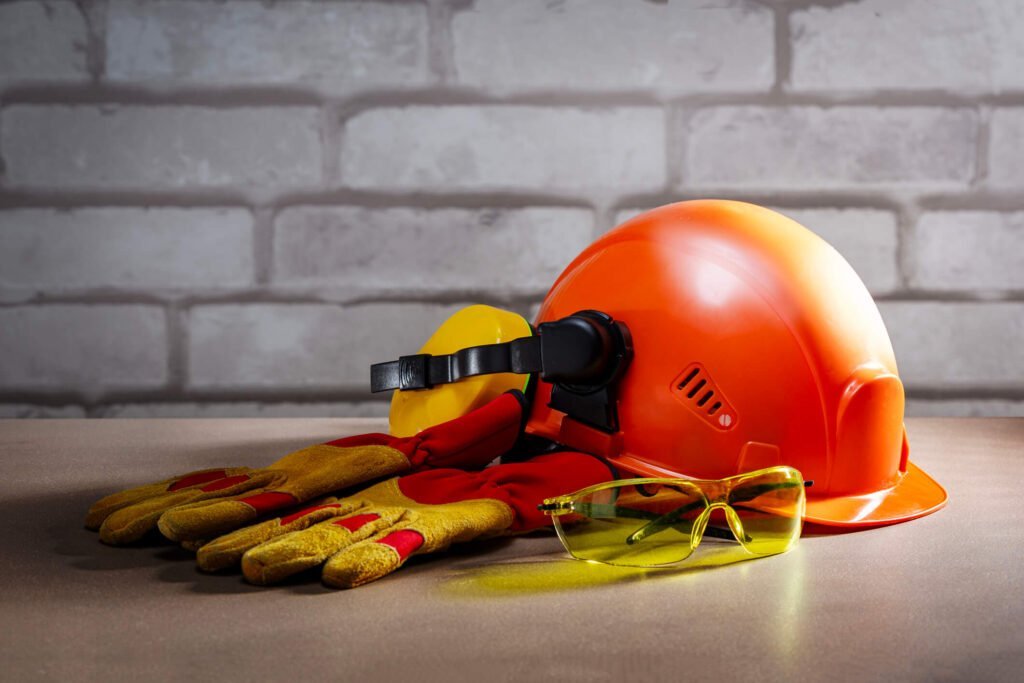Worker safety is paramount in the construction industry, given its alarming statistics of fatalities and nonfatal incidents. Construction alone accounts for a staggering 21% of all deaths among US workers in 2021. Additionally, there were 2.61 million nonfatal workplace safety incidents reported in the same year, encompassing slips, trips, falls, illnesses, and other injuries. Although this number represents a slight decrease of 1.8% from the previous year, it still underscores the pressing need for stringent safety measures.
OSHA’s Outreach Training Programs for Addressing Workplace Safety Concerns

In response to these concerning rates of risks and injuries, the US Department of Labor’s Occupational Safety and Health Administration (OSHA) has implemented a comprehensive training program tailored for employees in specific fields with one million employees attending these courses every year. The Outreach Training Program comprises two categories: the 10-hour and 30-hour courses, aimed at educating workers on workplace safety and health measures. Despite their shared focus on health and safety, many individuals remain perplexed by the distinction between OSHA 10-Hour and 30-hour courses.
Essential Components of OSHA 10-Hour Training
The OSHA 10-hour training primarily targets entry-level workers in construction and general industry. It covers essential safety and health information, including an explanation of serious workplace hazards, workers’ rights, employer responsibilities, and procedures for filing OSHA complaints. The training also provides insights into inspection priorities and processes, the function of OSHA, workers’ rights, and basic safety requirements such as personal protective equipment (PPE), health hazards, cranes, ladders, stairways, fire protection, and exposure to lead and asbestos.
Essential Components of OSHA 30-Hour Training
The General Industry OSHA 30-hour training, on the other hand, is much more comprehensive and is designed for safety directors, foremen, and supervisors. This course covers the same material as the 10-hour course but delves deeper into topics such as OSHA standards, safety and health hazards, and regulations. It also provides extensive training on various types of PPE, fire protection, hazard recognition, accident prevention, and safety requirements in diverse situations like ladders, excavation sites, construction sites, confined spaces, electrical hazards, hazardous materials, and more.
Overall, OSHA training plays a crucial role in raising awareness among workers, helping them avoid occupational injuries, illnesses, and fatalities, and enhancing job prospects and opportunities for career advancement in the construction industry.
Understanding The Differences Between OSHA 10-Hour And OSHA 30-Hour Training Courses

OSHA 10-Hour and OSHA 30-Hour courses stand out as vital training programs designed to enhance workplace safety measures and educate workers on health hazards. Despite their shared goal of promoting safety, several key distinctions set these courses apart. So, here are some of the key factors that keep both of the courses apart;
Duration Difference Between OSHA 10-Hour vs. OSHA 30
The numerical designation in OSHA 10-Hour and OSHA 30-Hour reflects the duration of the curriculum. OSHA 10-Hour courses encompass 10-Hours of instructional time, inclusive of quizzes, tests, and breaks. In contrast, OSHA 30-Hour is three times as long, requiring 30-Hours of instructional content. This difference in length allows OSHA 30-Hour to cover a broader range of topics in greater depth compared to OSHA 10, making it more suitable for individuals with supervisory responsibilities and a need for comprehensive safety training.
Distinguishing the Target Audience for OSHA 10-Hour and OSHA 30
The disparity in course length reflects the differing target audiences. OSHA 30-Hour is tailored for workers with supervisory roles like supervisors, managers, engineers, site leads, and safety specialists. Conversely, OSHA 10-Hour is designed for individuals responsible only for themselves, such as entry-level workers in construction and general industry. This distinction ensures that each course caters to the specific needs and responsibilities of its intended audience, providing relevant and comprehensive safety training.
Comparing OSHA 10-Hour and OSHA 30-Hour Course Content
Both OSHA 10-Hour and OSHA 30-Hour courses commence with an Introduction to OSHA, offering foundational knowledge on the organization’s purpose, significance, and enforcement of workers’ rights and employer responsibilities. However, the curriculum diverges based on industry and level. OSHA 10-Hour primarily emphasizes mandatory topics, allocating a smaller portion of time to elective topics, thus providing a generalized overview of workplace hazards.
Conversely, OSHA 30-Hour delves deeper into both mandatory and elective topics, offering comprehensive coverage of common hazards and a broader understanding of safety regulations. Additionally, OSHA 30-Hour incorporates a mandatory module on Managing Safety and Health, imparting critical skills and responsibilities for supervisors, such as job site inspections, accident prevention programs, and hazard identification.
This difference ensures that OSHA 30-Hour provides more detailed and targeted training suitable for individuals with supervisory roles.
Assessing OSHA Training Requirements
For most individuals, the choice between OSHA 10-Hour and OSHA 30-Hour hinges on their job responsibilities. Workers with supervisory roles necessitate the 30-hour version, while those without oversight responsibilities can opt for the 10-hour course. However, certain jurisdictions or employers may impose specific requirements mandating either course, necessitating careful consideration before enrollment.
Understanding one’s role and any regulatory or employer mandates is crucial in determining which course is appropriate, ensuring adherence with safety standards and addressing job-specific training needs.
Necessity of OSHA 10-Hour and OSHA 30-Hour Concurrently
While individuals may eventually undertake both courses over their careers, specific circumstances may warrant clarification. OSHA 10-Hour does not serve as a prerequisite for OSHA 30, and individuals can directly enroll in the latter course as per their job requirements. Similarly, if an individual possesses an OSHA 30-Hour completion certificate and a DOL card, it typically fulfills the OSHA 10-Hour requirement, albeit subject to state regulations regarding renewal frequency.
Understanding this distinction is crucial to avoid redundant training and ensure adherence with relevant safety standards. However, individuals should verify state-specific regulations and employer policies to ascertain whether holding both certificates is necessary for their particular roles or jurisdictions. By clarifying these requirements, individuals can streamline their training efforts and focus on obtaining the most relevant training for their career advancement and safety adherence needs.
Securing OSHA Certificates through Authorized Providers
OSHA does not directly administer Outreach courses but authorizes third-party training providers to conduct them. These providers offer online courses, enhancing flexibility and accessibility for participants. By partnering with an OSHA-authorized training provider, individuals can conveniently access the necessary training materials and resources from anywhere with internet connectivity.
Upon completion of the course, participants receive certificates of completion as well as durable plastic Department of Labor (DOL) cards. These cards serve as tangible evidence of their OSHA-authorized training, acknowledging their successful completion of the training program. Accessing OSHA certificates and DOL cards through authorized providers ensures that participants receive quality training that aligns with OSHA standards and regulations, contributing to a safer and more compliant workforce across various industries.
Retraining Requirements
OSHA emphasizes the importance of regular refresher training to reinforce safety knowledge and skills among workers. While OSHA 10-Hour & 30-Hour certificates usually remains valid indefinitely, these training may require renewal every few years to ensure individuals stay current with evolving industry standards and regulations. This periodic renewal process ensures that workers maintain up-to-date knowledge and skills necessary for effectively managing workplace hazards and promoting a culture of safety.
By staying abreast of industry changes through ongoing training, individuals can continue to mitigate risks and contribute to a safer work environment. Employers play a crucial role in facilitating retraining opportunities for their workforce, ensuring adherence with OSHA regulations and fostering a culture of continuous learning and improvement in workplace safety practices.
Advancement Opportunities
Completion of 10-Hour or 30-Hour OSHA courses opens doors to enhanced career prospects and job opportunities. OSHA 30-Hour training, in particular, is crucial for advancing into higher-level positions in safety management and supervision. Employers frequently prioritize candidates with OSHA 30 DOL cards when hiring for safety-sensitive roles, recognizing the advanced level of knowledge and commitment to workplace safety demonstrated by those who have completed the course.
Thus, investing in OSHA training can serve as a strategic move for individuals seeking career progression and increased responsibility within the realm of workplace safety and health management.
Cost Considerations
The cost of OSHA 10-Hour and OSHA 30-Hour courses varies by provider and location. Generally, OSHA 10-Hour courses are more budget-friendly due to their shorter duration. However, opting for comprehensive training like OSHA 30-Hour may yield long-term benefits by reducing workplace incidents and associated costs. While upfront expenses differ, considering the potential savings from enhanced safety measures underscores the value of investing in thorough training programs.
Balancing immediate costs with long-term benefits is essential for businesses aiming to prioritize employee safety and mitigate potential financial risks associated with workplace accidents.
Ultimate Significance Of OSHA 30-Hour & 10-Hour Course
Both OSHA 10-Hour and OSHA 30-Hour courses are integral to promoting workplace safety and adherence. Employers must evaluate their employees’ roles and duties to select the appropriate training program. Investing in thorough safety training cultivates a safety-conscious environment, mitigates workplace incidents, and safeguards the welfare of employees. By prioritizing comprehensive safety measures, businesses not only adhere to regulatory requirements but also demonstrate a commitment to the well-being and security of their workforce, ultimately enhancing productivity and fostering a positive organizational culture.


Leave A Comment